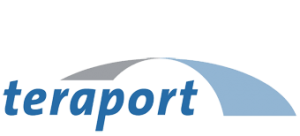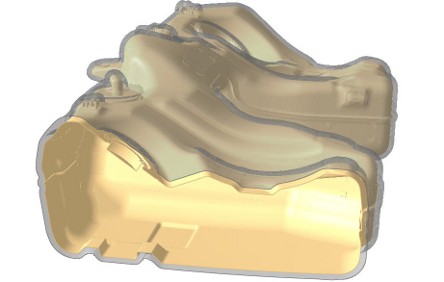Pro.OffsetBuilder
Client Requirements
Some components of an automobile expand under load or require a certain amount of maneuvering room when being assembled into the vehicle. These tolerances are not taken into account in the design of individual models. If, for example, an engine marriage is to be simulated, it must be taken into consideration that a few millimeters of maneuvering room will be required for the actual assembly. This must not be forgotten in the simulation. Or, in the case of the exhaust system; temperature induced expansion occurring during practical operation can also cause problems. This space requirement can be depicted with offset models, which are then made available in the PDM system to all the involved parties.
Teraport Solution
The process solution Pro.OffsetBuilder calculates an “offset” envelope for complex 3D geometry models. The degree of the increase in thickness and the fine detail of the envelope can be freely defined with the wizard-controlled user interface DMU.Connect. The specified offset is added to the geometry of the initial model. Figuratively speaking; a kind of ”filler” is spread over the model with the specified degree of thickness. This new geometry model can then be assessed in a visualization system, or it can be made available as a placeholder model in the PDM system.
Benefit for the Client
With Pro.OffsetBuilder, time-consuming manual checks are no longer necessary. The manual measurement of the required safety and assembly clearances in the CAD sectional views can be dispensed with. Whether it be the consideration of the required clearance to the environment of an engine, ensuring the feasibility of an engine marriage, or the required clearance zone for the exhaust system which has expanded due to heat – checking these cases on a digital prototype without an offset function would be time-consuming and work-intensive. If the cases of application described above were only to be checked on the physical prototype, there would be a very high risk of functional problems being discovered too late. This would, in turn, result in extremely cost-intensive design modifications or new designs. This can be avoided by employing an efficient simulation.

